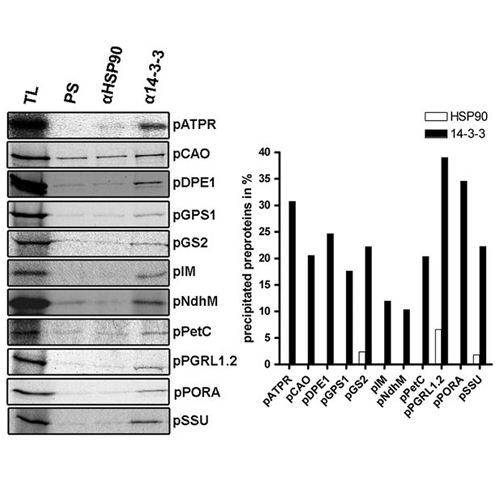Cytosolic HSP90 Cochaperones HOP and FKBP Interact with Freshly Synthesized Chloroplast Preproteins of Arabidopsis
18-May-2011
Molecular Plant, 2011, doi: 10.1093/mp/ssr037, Volume 4, Number 6, Pages 1133–1145, published on 18.05.2011
Molecular Plant, online article
Molecular Plant, online article
Most chloroplast and mitochondrial proteins are synthesized in the cytosol of the plant cell and have to be imported into the organelles post-translationally. Molecular chaperones play an important role in preventing protein aggregation of freshly translated preproteins and assist in maintaining the preproteins in an import competent state. Preproteins can associate with HSP70, HSP90, and 14–3–3 proteins in the cytosol. In this study, we analyzed a large set of wheat germ-translated chloroplast preproteins with respect to their chaperone binding. Our results demonstrate that the formation of distinct 14–3–3 or HSP90 containing preprotein complexes is a common feature in post-translational protein transport in addition to preproteins that seem to interact solely with HSP70. We were able to identify a diverse and extensive class of preproteins as HSP90 substrates, thus providing a tool for the investigation of HSP90 client protein association. The analyses of chimeric HSP90 and 14–3–3 binding preproteins with exchanged transit peptides indicate an involvement of both the transit peptide and the mature part of the proteins, in HSP90 binding. We identified two partner components of the HSP90 cycle, which were present in the preprotein containing high-molecular-weight complexes, the HSP70/HSP90 organizing protein HOP, as well as the immunophilin FKBP73. The results establish chloroplast preproteins as a general class of HSP90 client proteins in plants using HOP and FKBP as novel cochaperones.











